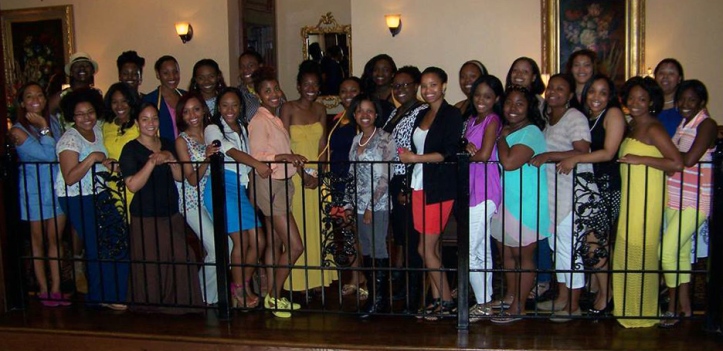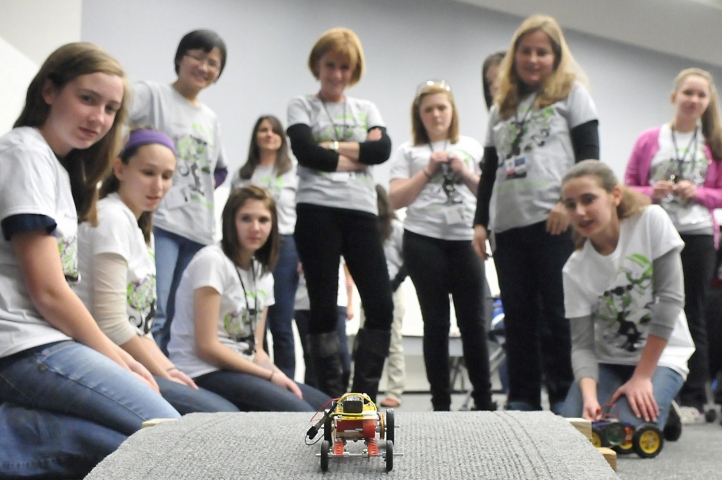Attending Spelman College helped me to realize my potential as a scientist and as a scholar. Sitting in a room full of women, the pressure of impressing members of the opposite sex removed, I was able to come into myself, build confidence and explore my role in scientific discourse.

I did not realize how comfortable I was in a room solely occupied by intelligent and accomplished young women until I experienced nearly the opposite. I recently took a Differential Equations course at Morehouse College, where I was the only woman. Though I performed well in the class, I was more reluctant to share my ideas even though I was confident that they were correct and sound.
I began to wonder if my experience was an isolated case, or if there were people like me that might benefit from single-sex educational experiences particularly in the fields of science, technology, engineering and mathematics (STEM). These experiences prompted me to explore the debate on gender-specific educational experiences.
Programs designed to promote and encourage interest in the STEM fields through these single-sex experiences are sparking a major debate across the nation. A recent article published in Forbes magazine briefly summarizes both the pros and cons associated with single-sex teaching environments. With the global push to develop better scientists and engineers and the push for equal representation, there is greater urgency to attract underrepresented groups to STEM education and occupations. However, identifying the best method to achieve this goal is not straightforward. There are a growing number of programs that specifically target girls. There are also increasing numbers of single-sex classrooms and schools, though the benefits of such programs remain largely unsupported.
Relaxation in the regulations put forth by the US Department of Education have allowed for the increase from 3 single-sex schools in 1995 to 545 schools by 2009. Identifying the benefits, or lack thereof, of these programs has proven difficult because of the inability to control for the influence of other factors like race and socioeconomic status. Even with the lack of information available, there has been a marked increase in the number of single-sex public schools and schools that have single-sex classrooms.
While girls’ academic performance is comparable to their male counterparts, studies have shown that their interest in STEM begins to wane around middle school. There is a major STEM gender gap in the United States, with women making up just over half of the population, but only 25% in STEM fields. Understanding what ultimately drives women away from STEM fields is imperative. In order to ensure a balanced and diverse group of future scientists, we need to develop programs and initiatives that motivate people from underrepresented groups to pursue education and careers in STEM.
In my research I discovered the Girls4Science program. Founded by Jackie Lomax in 2008, the Girls4Sceience program provides young girls between 10-18 years of age with mentorship, hands-on activities, scholarships and cultural experiences. Additionally, this is the only all-girls STEM initiative in the Chicago area. The ultimate goal of this initiative is to build self-esteem, confidence and skills that will allow participants to flourish and succeed in the male-dominated STEM environment. As demonstrated by experience as the only woman in an otherwise all-male class, being vocal in class, even when certain about your ideas, takes a lot of confidence and courage.

Thinking back on my experience, I did not have a role model, in the STEM field, with whom I could identify. This issue of having identifiable role models was particularly apparent to me when I was working with a group of young girls from an Atlanta-based middle school. The group of students was asked to imagine a scientist and then physically describe what and whom they envisioned. The general consensus of the group was, “a white man in a white lab coat.” Perhaps these young girls could not imagine themselves as scientists because they have not seen people like them in science.
While taking the course at Morehouse College, I felt as though I needed to behave in a certain way, like the representative woman that was quiet and reserved. This demonstrates an important concept known as gender intensification, which is described in more detail on the National Association for Single Sex Public Education website. Simply put, when in a coed environment people tend to adopt very specific gender roles that are dictated by societal norms. One societal norm that is easily recognizable is young boys and girls playing with different toys (i.e. boys with building blocks and girls with dolls). From early on we are conditioned, both intentionally and unintentionally, to behave in a certain manner that is somehow related to gender.
In recent years many initiatives have started that are aimed at dispelling gender stereotypes. This is evident in the Lego Company’s campaign to encourage girls to engage in construction play, the rise of programs like GirlsWhoCode and the design of specific programs and initiatives from the White House Council on Women and Girls. These programs aim to encourage girls to explore traditionally male-dominated arenas. The GirlsWhoCode mission is one that I find particularly outstanding. With the projected number of computer specialists positions set to reach 1.4 million, the GirlsWhoCode team aims to achieve gender parity within this population and “inspire, educate and equip girls with computing skills to pursue 21st century opportunities.”
Hopefully along the way these programs like Girls4Science and the recent Girl Scouts of America initiatives will help to pique girls’ interests in STEM subjects and career paths. As discussed in What We Know about Girls, STEM, and Afterschool Programs, the success of these programs can be attributed to the combination of active participation in scientific demonstrations and activities, mentorship opportunities, internships, and exposure to STEM careers and positive role models. The impact of positive role models and mentorship is critical in shaping young girls views and perceptions about science and their future in STEM. Fellow Sustainable Nano blogger, Dr. Christy Haynes, also discusses this in her post “’Leaning In’- Scientists’ Thoughts on Gender Equity.” The impact of positive role models and mentorship on the persistence of women in STEM is discussed in an article published recently in U.S. News.
While I was preparing this post, a colleague commented that these programs won’t prepare students to enter real-world scenarios where gendered dynamics are more prevalent. To address this point, the aim of these programs should not be to prepare young women to work and learn in a segregated world, but should prepare them to work in any environment. They should prepare these young women to be free thinking leaders who are well equipped to address the challenges and concerns that they will encounter in the future. Reflecting on my experiences at Spelman I believe that being in an environment surrounded by intelligent young women with whom I could identify, allowed me to grow into a confident, capable and driven scientist. I feel that I was well prepared to be successful here at Northwestern University and in any setting. Open discourse regarding the implementation of single-sex educational programs is becoming increasingly important to meet the demand for a more-diverse and qualified pool of STEM professionals. [Please join in on the discussion below.]
Other good reads:
Girls Make the Grade at the White House Science Fair
Girl Scout Research Institute STEM Study
The Great Gender Debate: Should Boys And Girls Learn Separately?
Eckes, S.; McCall, S. The Potential Impact of Social Science Research on Legal Issues Surrounding Single-Sex Classrooms and Schools. Educational Administration Quarterly 2014, 50.
Hughes, R.; Nzekwe, B.; Molyneaux, K. The Single Sex Debate for Girls in Science: a Comparison Between Two Informal Science Programs on Middle School Students’ STEM Identity Formation. Res. Sci. Educ. 2013, 43, 1979-2007.

Google just announced an initiative to inspire girls to code: http://googleblog.blogspot.com/2014/06/things-you-love-are-made-with-code.html